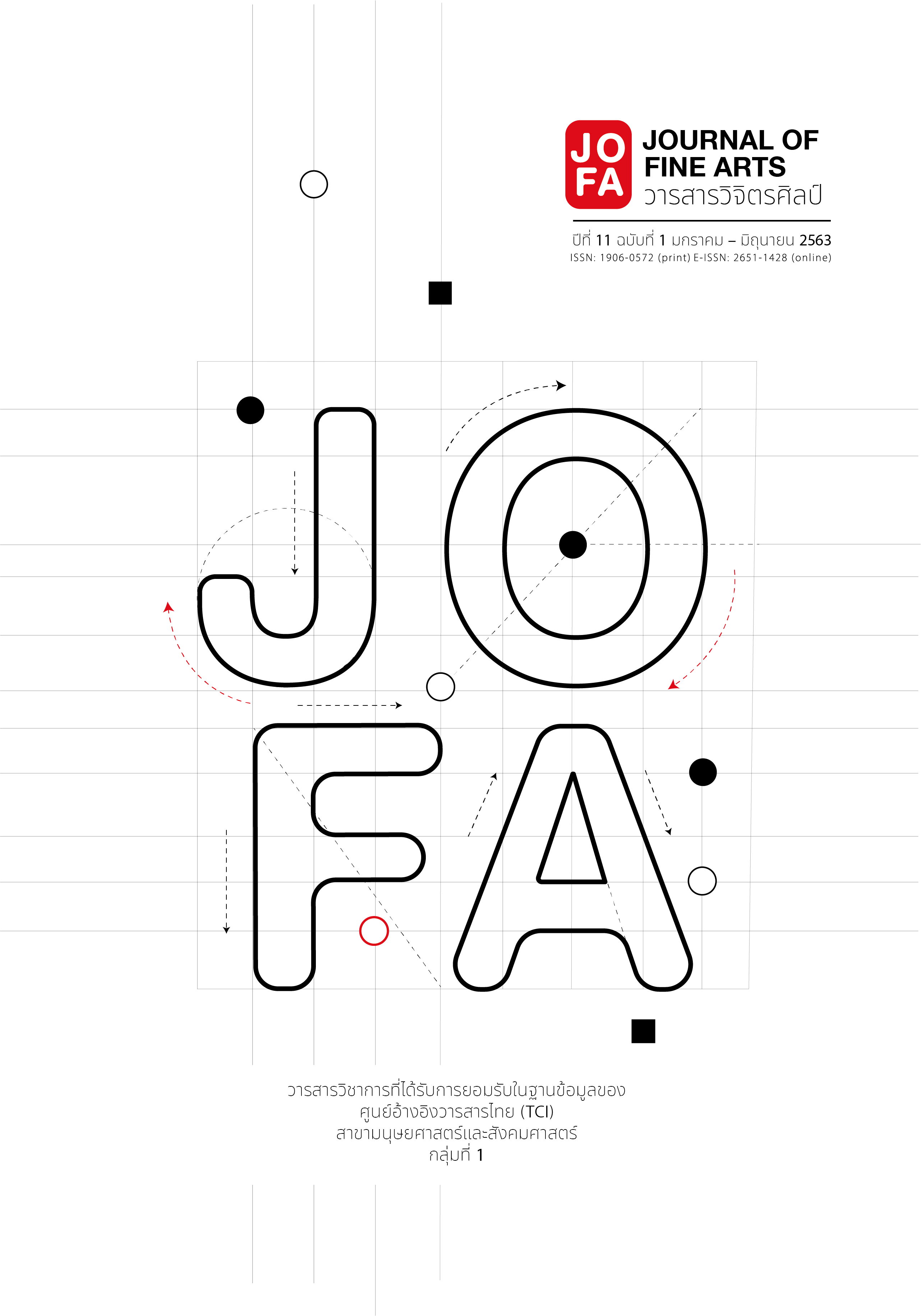City Branding : Uthai Thani City of Culture.
Main Article Content
Abstract
The objectives of this study were to 1) investigate the cultural context influencing image and condition of Uthai Thani province and 2) to provide the guideline for designing the image of Uthai Thani model, city of cultural aesthetics by focusing on the localities with outstanding cultural heritage the meet the UNESCO criteria. The data from literature review, focus group with the primary informers and the questionnaire on perception of the cultural image of tourists were used to synthesize, interpret and create the guideline for designing prototype products.
The results consisted of 4 parts which included (1) basic information, condition, cultural context. It was found that Uthai Thani have various outstanding cultural heritage. Most of them are in Muang district such as raft community, Wat Uposatharam, Wat Chantharam. The cultural heritage in other districts are such as rock paintings at Khao Pla Ra, Thai Krung woven fabric and folk songs of Baan Tha Pho.
(2) Opinion and perception of cultural image of the tourists. It was found that the most influential media are Internet website and social media and influential people are family members
and colleagues. The respondents were most satisfied and appreciated the cultural value of religious places, sacred places and lifestyles. Most of them perceived the value of concrete cultural heritage which included Wat Chantharam, Phra Buddha Mongkol Saksit, mondop on Khao Sakae Krang, the monument of Prapratom Borom Maha Chanok, respectively. The abstract cultural heritage included Tak Bat Devo, raft community lifestyle and ivory altar table, respectively.
(3) Personalities, keywords and abstract meaning, it was found that the image of Uthai Thani province consisted of 6 personalities such as natural style, classic style, clear style, dynamic style, elegant style and gorgeous style. The keywords from outstanding identities were replaced with abstract connotation and were represented by English letters A-Z to make it easier to use in design.
(4) The design was performed by using concepts and connotations that reflected the cultural image of Uthai Thani province.
Article Details
References
Anholt, S. “Brands and Branding.” In Branding places and nation, edited by R. Clifton, J. Simmons, and S. Ahmad, Princeton. New Jersey: Bloomberg Press, 2004.
City of Melbourne. “Launch of the new City of Melbourne brand.” Accessed September 22, 2017. http://www.melbourne.vic.gov.au/news-and-media/pages/a151278a-cd0d-4144-a9c2-a735b5464b5a.aspx.
________. “CITY OF MELBOURNE SPONSOR/PARTNER LOGO GUIDELINES.” Accessed September 22, 2017. http://www.melbourne.vic.gov.au/sitecollectiondocuments/com-sponsor-branding-guidelines.pdf.
Department of Intellectual Property. “Khrōngkān mư̄ang tonbǣp sētthakit sāngsan. [Creative City Project].” DIP Journal 7, No.3 (July - September, 2011): 21.
Department of Tourism. “Sathiti prīapthīap rāi čhangwat. [Comparative statistics of province by province].” Kromkānthō̜ngthīao. Accessed September 19, 2018.http://61.19.236.136:8090/dotr/statistic_compare.php.
Fola, M. “City branding theory and cases.” In Athens City Branding and the 2004 Olympic Games. Edited by K. Dinnie. London: Palgrave Macmillan, 2011.
Insch, A. “Branding the City as an Attractive Place to Live.” In City branding theory and cases. Edited by K. Dinnie. London: Palgrave, 2011.
International Olympic Committee, “Athens 2004.” Olympic. Accessed 20 September 2017. https://www.olympic.org/athens-2004.
Khana kammakān fāi pramūan ʻēkkasān læ čhotmāihēt nai khana Kammakān ʻamnūai kān čhat ngān chalœ̄m phrakīat phrabātsomdetphračhaoyūhūa. Watthanatham Phatthanākān Thāng Prawattisāt ʻĒkkalak Læ Phūmpanyā Čhangwat ʻUthai Thānī [Culture History Development Identity and Wisdom of Uthai Thani.] 1st edition. Bangkok: Kurusapa Printing Ladphrao, 1999.
Landor. “Rebranding the city of Melbourne”. Accessed 22 September 2017. https://landor.com/thinking/rebranding-the-city-of-melbourne.
Nō̜iphayak, W. “Krasǣ Kaolī [Korean Wave].” eTAT Tourism, No.4 (October - December, 2008). Accessed July 26, 2016. http://www.etatjournal.com/upload/239/3_Korean_Wave.
Post to day. “Nakhō̜n Mēnbœ̄n rang chǣm mư̄ang nā yū thī sut nai lōk čhet pī sō̜n [Melbourne was once again ranked the world’s most liveable city]” Post to Day. August 19, 2017. Accessed October 28, 2017, https://www.posttoday.com/world/news/509922.
PPTV Online. “Nưng nai sām “mut lōk” khō̜ng ʻĒchīa bon yō̜t khao Sakǣ Krang. [The Pin on Sakea Krang Mountain, One of Three “World Pins” in Asia]” PPTV HD 36. Accessed March 13, 2019. https://www.pptvhd36.com/news/ประเด็นร้อน/88442.


